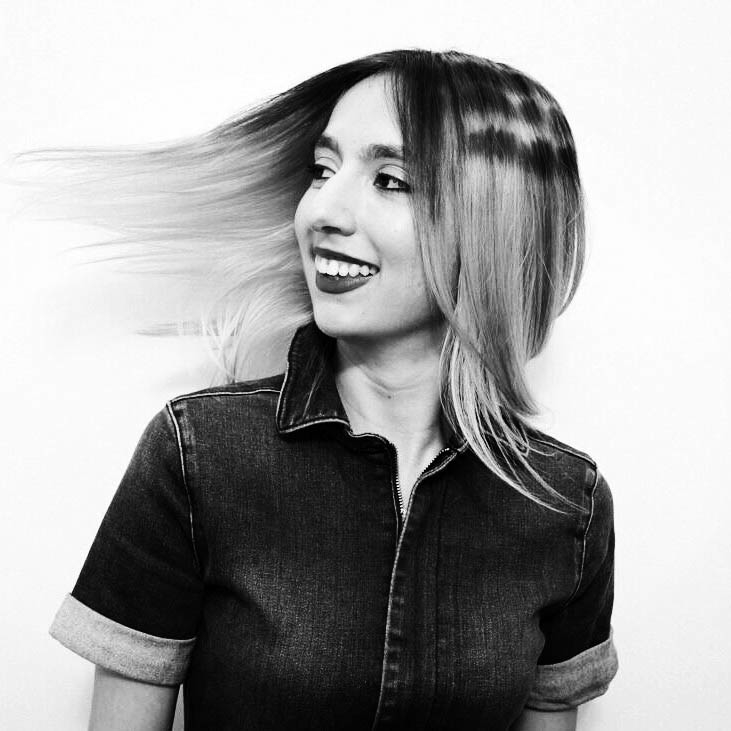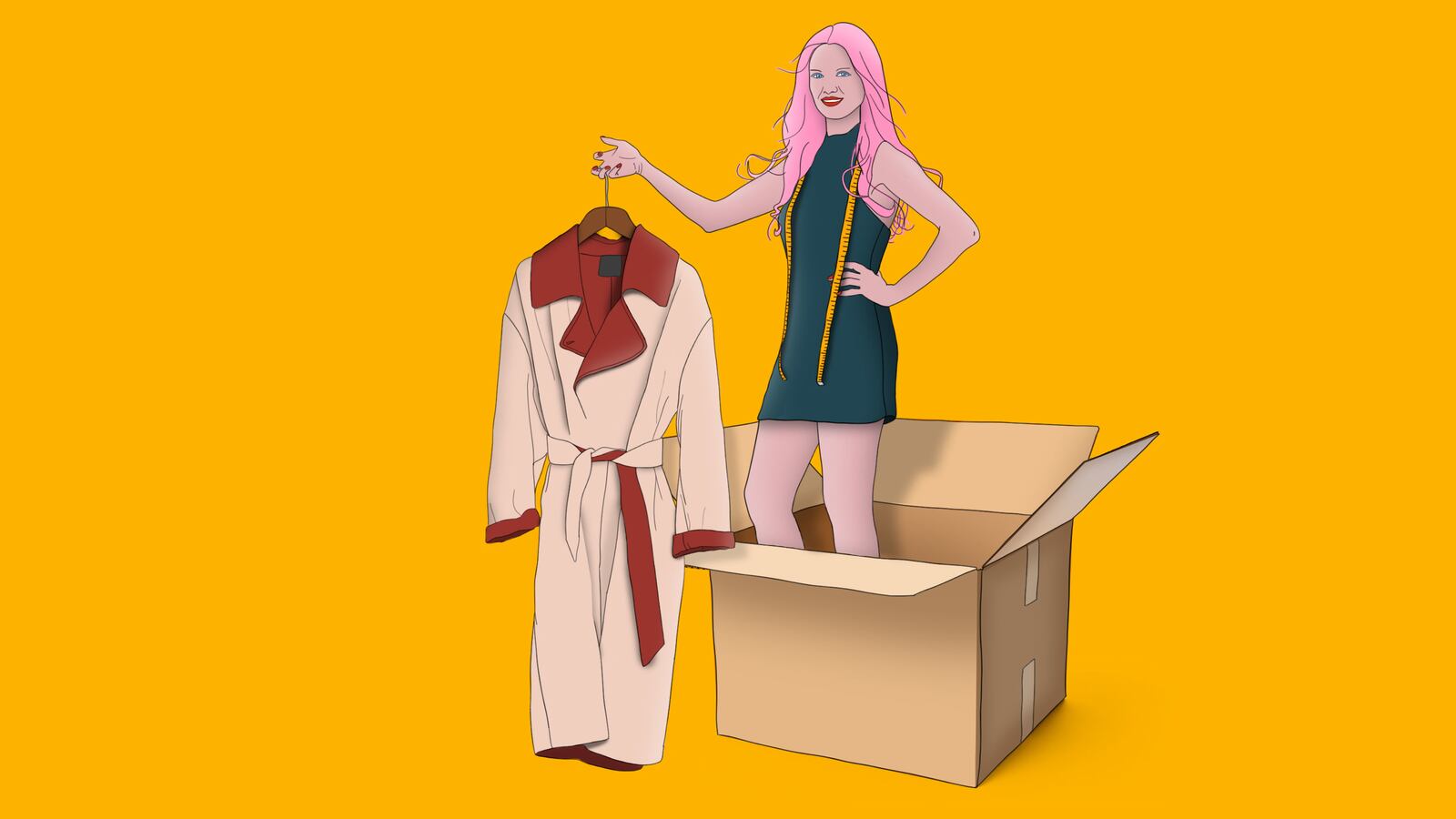Last November, Chicago-based personal stylist Jenny Applegate got a call from a woman who wanted to schedule an appointment—in exactly one year. “She had set a goal that she wanted to lose a hundred pounds,” Applegate said. “And she wanted to treat herself with a new wardrobe afterwards.”
It’s a story ripped from Queer Eye—and one Applegate finds herself living pretty regularly. She’s spent the past 10 years helping people find outfits for the most important days of their lives. Nurses who basically live in scrubs come to her wondering what to wear on their days off. Recently divorced men, who used to rely on their wives for fashion advice, shoot her texts asking what color tie is most appropriate for a big meeting.
“People are becoming more conscious of fashion,” Applegate told The Daily Beast. “But not everyone has the ability to put outfits together. In the past, women especially, may have felt like they have to know how to dress right. It could have been seen as embarrassing if someone else is dressing them. But now it’s widely acceptable, like a badge of honor, if they have someone working to help them feel good about themselves.”
It helps that personal stylists, once regulated to behind-the-scenes status, have become celebrities themselves thanks to shows like What Not to Wear and The Rachel Zoe Project. “Rachel Zoe, bless her, brought the industry and the career to more of a mainstream level,” Kam Throckmorton, based in Atlanta, said.
Lady Gaga’s first clothing consultant, Brandon Maxwell, now has his own ready-to-wear line, seen on the likes of Michelle Obama, Jennifer Lawrence, and Nicole Kidman. The Hollywood Reporter keeps an annual power list of its hometown’s 25 top stylists, and women’s magazines regularly quote them as experts.
An online service, Stitch Fix, launched in 2011 and now has 3.2 million clients. Women, men, and children (or their parents) can fill out a questionnaire on the site and get outfits delivered to their homes, courtesy of an algorithm and human stylist. The company’s 36 year-old founder, Katrina Lake, ranks as one of Forbes’ richest self-made women under 40.
Stylists are well-known enough for Nicole Blair to make a living as a personal brand and fashion expert in Carmel, Indiana. “I equate it to the early days of a [fitness] trainer,” Blair said. “You only had one if you were a celebrity, but now the average person has one. That’s what’s happening with styling now. People realize there’s more to getting dressed than just covering their body.”
Blair told The Daily Beast her clients tend to be “high-achieving women” who might feel like their careers are stuck or lagging. “In your twenties, you have all this time to read magazines and blogs, but when you get older, a lot of women don’t have time to google what’s trending,” she said. She gives every customer a tagline to remember when they shop.
For one local news anchor, Blair wanted to channel, “New York meets Los Angeles, with the warmth of the midwest.” She told a woman addicted to shopping that, “If it’s not a hell yes, it’s a no.” Another client who tended to play it safe in clothes and life got the advice, “It’s time to boss up, bitch.”
“I’m very direct with my clients,” Blair said. “I tell them, ‘We are going to get so personal. Without clothes, this is the most vulnerable you’ll ever be.”
Throckmorton, the Atlanta stylist, has a degree in social work from the University of Georgia. “I use that more than I would a degree in fashion,” she said. “We’re all about digging into why—Why don’t you want to wear red? Why don’t you want to wear something that defines your waist? Women are usually in their bras and panties within 30 minutes of meeting me, so that’s a huge level of trust, really fast.”
The mythical makeover has long captured the public imagination, from Cinderella's debutante moment and Eliza Doolittle’s etiquette classes to sumptuous shopping montages in Pretty Woman and The Princess Diaries. Dramatic before-and-afters are a stylist’s end goal, but the real-life scenes are quieter than film counterparts.
“I don’t really have those Pretty Woman moments,” Throckmorton said. “It’s not, ‘Let’s go out and spend a ton of money for fun.’ It’s watching women cry in a dressing room because they find a pair of jeans that fit, or seeing someone prance up and down in the dressing room because they’re wearing leopard print heels for the first time. There’s a preconceived notion that I work with a bunch of divas—that’s not true. I work with a bunch of wonderful, warm people who just don’t like to shop.”
Of course, jeans don’t always fit just right, and leopard print stilettos don’t look good on everyone. Stylists may be an ad hoc best friend—or therapist—to the person who hires them, but they are being paid for their honesty. Sometimes that means getting constructive, a talent every consultant has to master quickly.
“I think the easiest thing to do is say, ‘I don’t love this on you,’” Emily Burnette, a stylist based in New York, said. “Say, ‘I really love the last look we tried on, it accentuates this nice part of your body,’ or ‘It brings out the color of your eyes,’ or ‘It seems like something you would wear.’ You just have to be diplomatic about your wording.”
It’s a strategy shared by Alison Kahn Geiger, who has worked in Los Angeles for 17 years. “You want to make them feel comfortable, so you highlight what does look good,” she said. “Most of the time, clients have more than one amazing feature to show off. And once I begin to work with them a little bit, they start to do it on their own: ‘Nope, this doesn’t look good, I’m taking it off.’”
One retired radiologist from New York, who asked The Daily Beast not to print his name, spent most of his life “clueless” about what to wear. “I grew up in Brooklyn, where we buy everything big because we think we’re getting a bargain, more material for the price,” he said. “I had no sense of fit or what went together; it was guesswork for me.”
The doctor, who is now 64, would dress very conservatively, avoiding trends, to stay on the safe side.
Five years ago, he met the stylist Samantha Brown through his social club, and soon she was purging his closet, recommending what to get rid of. “She had me try everything I had on, told me what was in style, and what went with what,” the doctor said. “She told me what I should keep, and how I could fill in what I already had with new items. I found it to be a safe space where I could throw out any crazy idea and get an objective answer.”
Since hiring Brown, the doctor, never known as a fashionista, has garnered some appreciated attention from friends and family. “I ran into a good friend and I was wearing something different, and she’ll say, ‘Did you buy that with the shopper? That looks like a shopper thing.’ She can’t believe how much better my clothes fit.”
Brown, a Westchester, New York native who began her career at 14, taking trains into the city to intern at Fashion Week, charges $225 an hour. “I’m their biggest cheerleader,” she said. “I send out Christmas cards to over 500 people a year.”
Catherine Petit Wu, 43, has spent a decade working with Brown, who she met through a fitness Facebook group. “I would buy like crazy, just things that I liked, but I’d bring things back to my closet and realize I didn’t have anything to go with it,” Wu said. “It was a mish-mash. A lot of buying, but always missing something.”
Working full time as a financial controller, with two small kids at home, Wu didn’t feel like she had a lot of time to spend at department stores. Brown brought clothes straight to her apartment, and she tried everything on in her own space, rather than a dressing room. She kept what she liked, and Brown returned everything. “It’s so luxurious,” Wu said. “It’s like a Rolls Royce way to experience shopping. It’s a half day, not even, and you’re done.”
While hiring a personal stylist may be gaining traction around the non-famous, its connection to the one percent is still part of the allure. It might not be as essential service of a service as, say, fixing a car, but the positive effects of a fitted interview suit or the comfort that comes with having a go-to black dress for unexpected funerals should not be underestimated.
“With a red carpet celebrity, you put them in a dress and they land the leading role the next week because of how they looked,” Brown said. “That’s not what’s going on with my real people clients. They’re hopefully getting dressed the week after we work together, showing up everyday with their heads held a little higher. It’s a power stance that comes with feeling good about yourself.”






